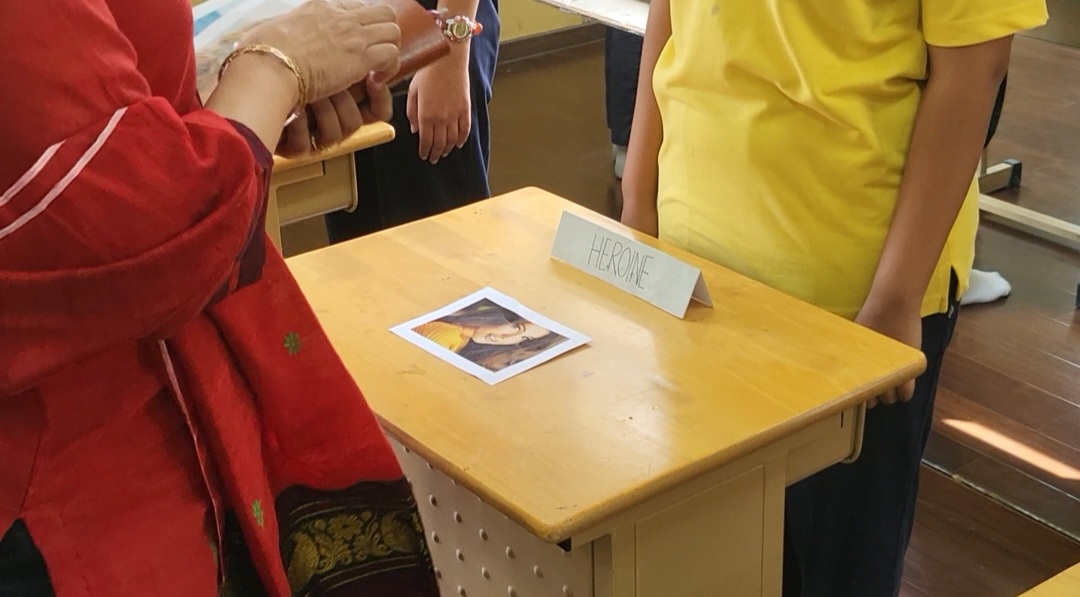As an International Baccalaureate (IB) educator, I embrace lifelong learning and sought to enrich the learning process for my Middle Years Programme (MYP) 3 students. Working as a curriculum developer for the enhanced MYP project we were introduced to Gert Biesta’s ‘world-centred education’. Inspired by this, I introduced challenging questions in my unit ‘dance in the contemporary world.’ I asked my students, “What challenging question do you want to ask the adults in your school related to a current issue the world is facing?”
Their question, “What is a pretty face?”, led to a powerful social experiment challenging colourism, pretty privilege, and bias. I guided them through the Goal, Role, Audience, Situation, Product & Standards (GRASPS) strategy to bring clarity to their planning and learning process.
The students designed, scripted, and choreographed a performance based social experiment. On the day of the showcase, 15 adults (teachers, staff & pedagogical leaders) were invited to the classroom one by one and asked to select the cast for an upcoming Hollywood movie. They were asked to choose the male lead, female lead, and villain from the set of pictures given to them. After the experiment all the adults were called in the room and shown the results where most of them had chosen people with darker skin tone to be the villain and people with lighter skin tone for the male lead and female lead. The students culminated the experiment with a dance performance advocating the adults to remove their implicit bias and conditioned thinking that they subconsciously hold.
Through dance, they conveyed the message that everyone is beautiful, regardless of their skin tone or features. The experiment revealed implicit biases held by adults, sparking reflection and discussions on pretty privilege and colourism.
The interdisciplinary approach in this experiment allowed students to use knowledge and skills from different subjects, making the experience impactful. As my students returned home with newfound confidence in their ability to bring change, the adults left with a deeper understanding of their conditioned biases. This transformative journey highlighted the potential of asking challenging questions in the classroom, empowering young minds to make a positive impact on the world.
Teacher Reflections
In a world riddled with stereotypes and biases, this activity was a subtle yet powerful way to make us aware of our own inherent stereotypes and thinking errors, which lead to biased thinking and behaviour – Meenakshi Sharma, Head of pastoral care & DP Psychology facilitator
The performance was novel by serving the cause in a different way. It hit audience at the right spot as it questioned the concerns generally not spoken about and are implicit in us – Vanshika Sahni, school counsellor
Through the medium of dance, students expressed a complex idea with seemingly simplified ease. The discrimination and stereotypes that I have been contributing to unwittingly became apparent to me and gave me much to think about – Anusha Chauhan, head of language & literature
The dance piece on the social cause of speaking about stereotypes was powerful and thought provoking. Students, keep inspiring us through your dance and create such awareness to inspire change – Karthik Hariharan, college counsellor

Vaishak M Raj is an IB continuum educator and has been working in the performing arts department at DPS International Gurgaon, India engaging the MYP students to develop their artistic voice and choice. He is also the deputy CAS coordinator for DP, an International Baccalaureate educator network (IBEN) curriculum developer who was part of the enhanced MYP project and IBEN programme leader for MYP responsible for school evaluation visits in the IBAP region. He is currently undergoing training and orientation to become an IBEN Workshop leader.



